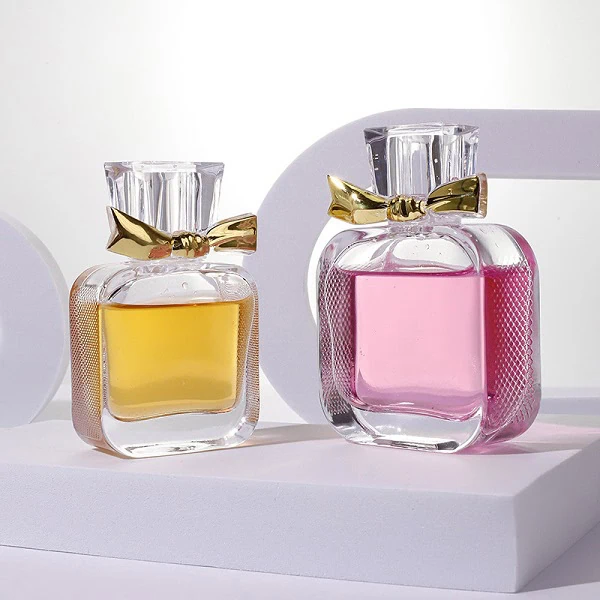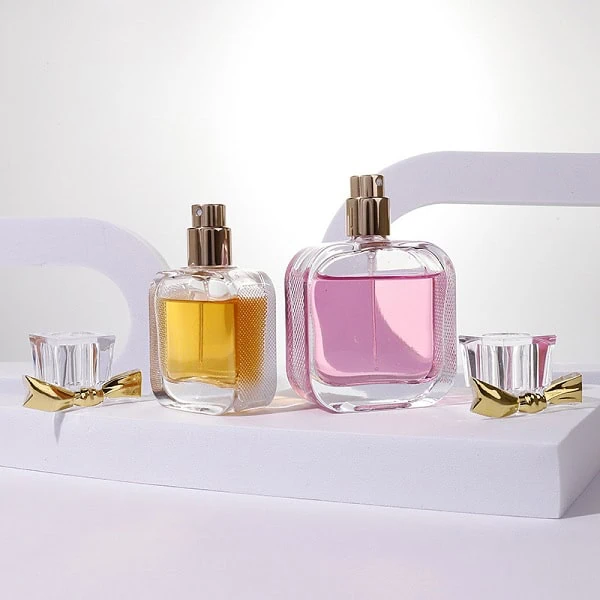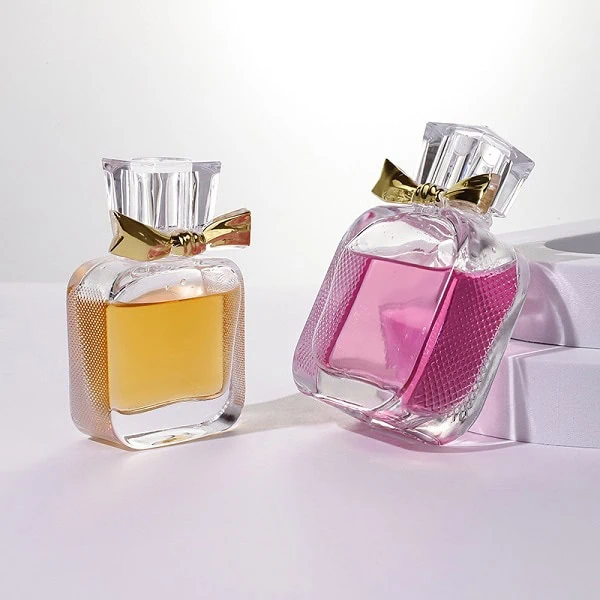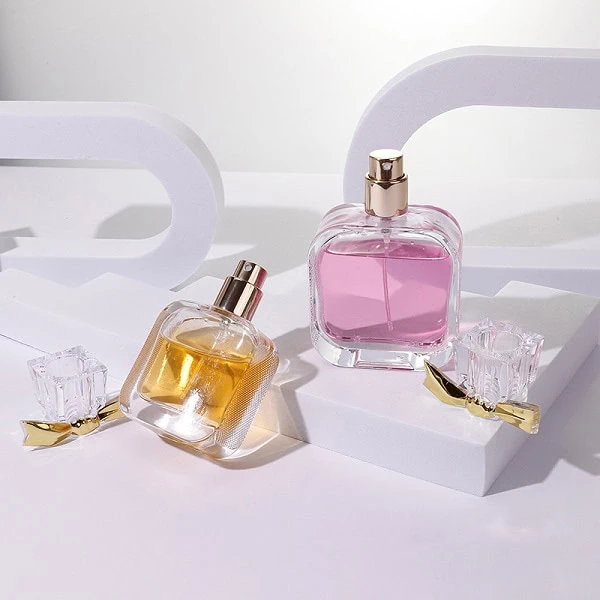Perfume bottles are more than just containers; they are works of art. But have you ever wondered what the different parts are called? It’s time to get a closer look.
A perfume bottle is made up of several key components: the bottle (flacon), the cap or stopper, the atomizer (or sprayer), and the dip tube. Each part has a specific function, working together to preserve the fragrance and allow for a smooth, even application.

I’ve been in the glass bottle industry for many years, first as a factory employee and now running WXglass. I’ve seen countless designs and learned a lot about how they are put together. Today, I want to share some of that knowledge with you, so you can better understand these beautiful objects.
What Are the Parts of a Bottle Called?
You’ve probably handled many bottles in your life, but have you ever thought about their specific anatomy? Knowing the terminology can help you better understand how they are made and why they function the way they do.
The main parts of a bottle are the body, the neck, the shoulder, the heel, and the finish. The body is the largest section, while the neck connects it to the opening. The shoulder is the curved part between the body and neck, and the heel is the bottom edge.

Let’s dive deeper into the individual components of a bottle. Understanding these terms is very useful, whether you’re a collector or someone in the business. The body of the bottle is the largest part. This is where the perfume itself is held. Its shape and size are what people usually notice first. The finish is the top of the bottle where the cap or closure is attached. This area is very important because it needs to be made perfectly to ensure a tight seal. A poor seal can lead to evaporation or spills. The neck is the part right below the finish. It’s often narrower than the rest of the bottle. The shoulder is the area where the body narrows to form the neck. This transition can be sharp or smooth, which affects the bottle’s design. The heel is the very bottom of the bottle. It is the flat part that allows the bottle to stand upright. I’ve seen some very interesting designs where the heel is not a simple circle, but has a unique shape. Then you have the base, which is the flat surface at the bottom of the heel. This part needs to be very strong to prevent the bottle from breaking when placed on a hard surface. The seam lines are visible lines on the bottle from the molding process. They are often a sign of how the bottle was made. I have had customers who were very particular about the visibility of these lines. I often explain how the quality of the mold affects how prominent these lines are.
| Component | Description | Function |
|---|---|---|
| Body | The main part of the bottle. | Holds the liquid inside. |
| Neck | The narrow section at the top. | Connects the body to the opening. |
| Shoulder | The transition from the body to the neck. | Affects the overall shape of the bottle. |
| Finish | The very top of the bottle. | Where the closure is applied for a seal. |
| Heel | The bottom edge of the bottle. | Provides stability for the bottle. |
What Are the Parts of a Spray Bottle Called?
You use a spray bottle all the time, but do you know what makes it work? There are a lot of small parts that must work together to create that perfect mist.
A spray bottle, or atomizer, is made up of the actuator, the pump, the dip tube, and the collar. The actuator is the button you press. The pump creates pressure. The dip tube draws liquid from the bottle, and the collar holds everything in place.

Let me explain the different parts of the spray mechanism in more detail. This is where the magic happens. The actuator is the button you push down with your finger. This action is what starts the spraying process. The design of the actuator can change how the spray feels and how much product comes out. The pump is the engine of the spray mechanism. When you press the actuator, you compress a spring inside the pump. This creates pressure. When you release the actuator, the spring pushes back. This action draws the liquid up through the dip tube. The dip tube is the small, thin tube that reaches to the bottom of the bottle. It pulls the perfume from the bottle up into the pump. A common problem I’ve seen is when the dip tube is too long or too short. If it’s too long, it might bend and not draw up all the liquid. If it’s too short, it will leave a lot of liquid at the bottom of the bottle. The gasket, a small seal, prevents leaks. It is a critical component. A poorly made gasket can lead to a lot of product loss. The collar is a ring that holds the entire spray assembly onto the bottle. It can be a screw-on type or a crimp-on type. The type of collar affects how the bottle is filled and sealed. I have had clients who prefer the screw-on type for refilling. The cap or stopper is a protective cover. It prevents accidental sprays and keeps dust out of the actuator.
| Component | Description | Function |
|---|---|---|
| Actuator | The button you press down. | Releases the spray. |
| Pump | The internal mechanism. | Creates pressure to move liquid. |
| Dip Tube | The long tube inside the bottle. | Draws liquid from the bottom. |
| Collar | The ring that attaches the sprayer. | Secures the sprayer to the bottle. |
| Gasket | A small seal inside the pump. | Prevents leaks. |
What Are the Features of a Perfume Bottle?
Beyond the basic parts, there are many features that make a perfume bottle unique. These features are all about design and function. They make each bottle special.
Perfume bottle features include the material, the shape, the color, and the decoration. These elements work together to create a unique look and feel. The shape, for example, can be round, square, or something entirely unique. The color can be clear or tinted.

There are a lot of factors that go into designing a great perfume bottle. One of the biggest is the material used. Glass is the most common material. Glass is great because it is inert. This means it doesn’t react with the perfume inside. It keeps the fragrance safe. There are different types of glass, like soda-lime glass and borosilicate glass. The type of glass affects the bottle’s clarity and strength. The shape of the bottle is another key feature. I’ve seen bottles that are tall, short, wide, and thin. Some bottles have very complex, sculpted shapes. This is where the bottle becomes a piece of art. A complex shape can make the bottle more difficult and expensive to manufacture. The color of the bottle is also important. The glass can be clear, or it can be tinted. The color can be achieved by adding different minerals to the glass during the manufacturing process. For example, adding iron oxide can create a green tint. The color can protect the perfume from light, which can damage the fragrance. Decoration is a very important feature. Bottles can be decorated in many ways. I’ve worked with clients who want frosting, etching, screen printing, and hot stamping. Each method gives the bottle a different look and feel. Screen printing is a good way to add a logo. Hot stamping is great for adding a metallic effect. The cap is also a key feature. It is not just a functional part. It can be a part of the design. The cap can be made of glass, plastic, or metal. The material and design of the cap must match the rest of the bottle. I have had many clients who are very focused on the cap design. They understand that a good cap can make a big difference in the final product.
| Feature | Description | Function |
|---|---|---|
| Material | The substance the bottle is made of. | Determines strength and chemical stability. |
| Shape | The form or outline of the bottle. | Defines the aesthetic and feel. |
| Color | The visual hue of the glass. | Protects from light and adds design. |
| Decoration | Added artistic details. | Enhances the brand and bottle appearance. |
| Cap | The top closure of the bottle. | Protects the sprayer and completes the design. |
Conclusion
Understanding the parts of a perfume bottle, from the body to the sprayer, helps us appreciate the craft. Each component is a part of a bigger design, meant to protect and deliver a beautiful fragrance.

